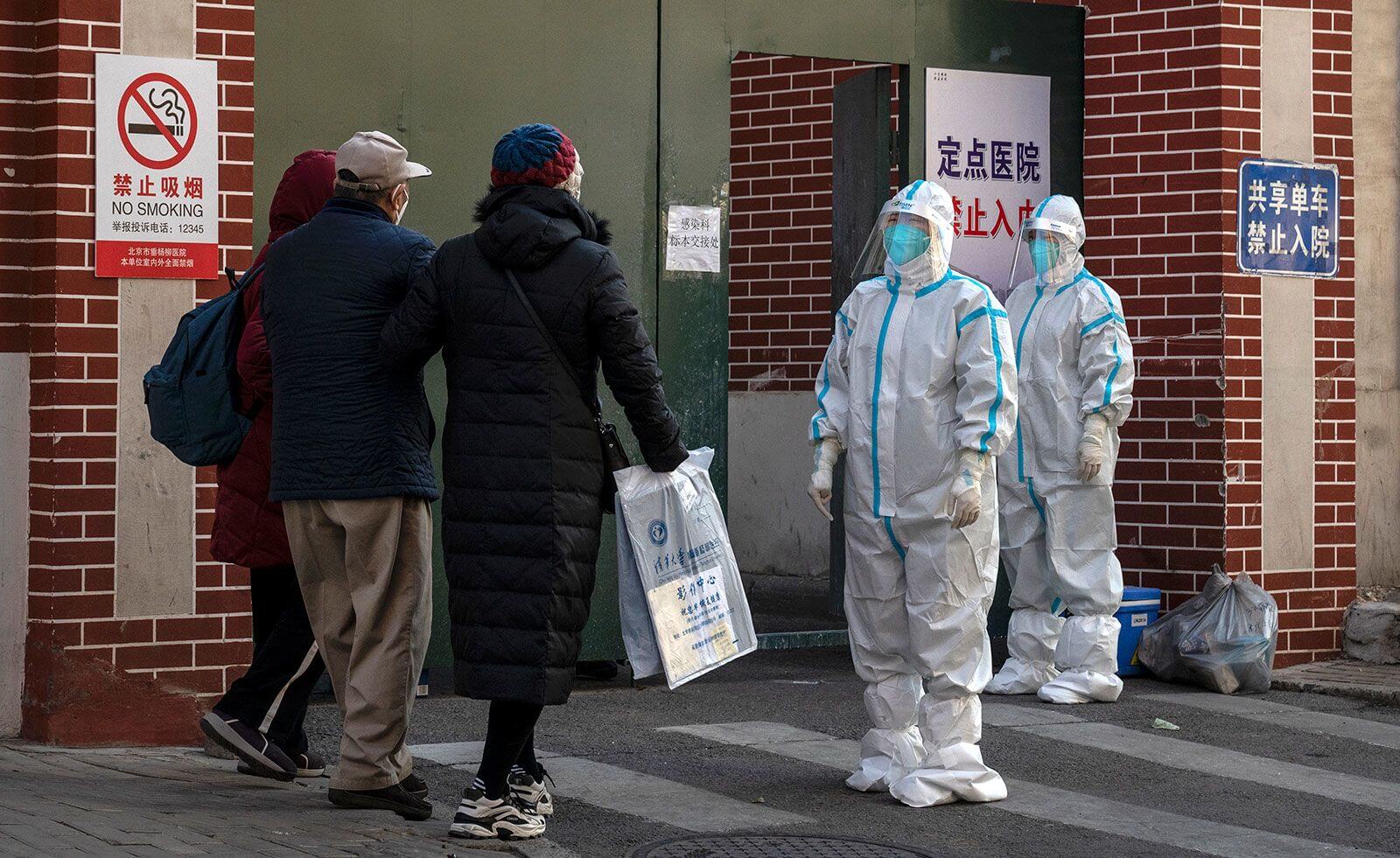A new study has shown that China could reduce its possibly grim COVID-19 death toll by more than seven-fold, as it continues to relax its stringent zero-COVID measures.
Researchers from the University of Macau and Harvard Medical School said that the country’s sudden relaxation of public health measures could kill as many as 1.5 million from contracting the infection over the next six months.
However, they claimed that the potential death toll could be reduced to less than 200,000 if authorities implement appropriate public health measures to help slow its spread, increase vaccination rates, and ensure adequate medical supplies.
7) Yes I care because I was born in China — but also because I’m an epidemiologist (my D degree is in it), & I’ve seen this shit show before. What happens in China doesn’t stay in 🇨🇳— Wuhan was our lesson 3 years ago. The global fallout of this 2022-2023 wave will not be small.👇 https://t.co/hRsNHnnWdG
— Eric Feigl-Ding (@DrEricDing) December 19, 2022
The new study, which is yet to be peer-reviewed, assessed the overall effectiveness of Beijing’s prevention measures by “establishing an Omicron transmission model” based on pandemic data from Macao, Hong Kong, and Singapore in 2022.
Specifically, researchers evaluated the benefits of the “flatten the curve” strategy, which includes several non-pharmaceutical interventions that can reduce infection rates, such as quarantines, social distancing, and a mask mandate.
Researchers found that the lack of a “flatten the curve” strategy, combined with China’s current immunity level, will result in more than 1.27 billion people getting infected within three months. Moreover, it warned that 1.49 million people would die within six months unless Beijing implements steps aimed at containing the pandemic's spread.
2) Summary of #CCP's current #COVID goal: “Let whoever needs to be infected infected, let whoever needs to die die. Early infections, early deaths, early peak, early resumption of production.” @jenniferzeng97
— Eric Feigl-Ding (@DrEricDing) December 19, 2022
Dead bodies piled up in NE China in 1 night—pic.twitter.com/nx7DD2DJwN
If Beijing does implement the “flatten the curve” strategy, researchers predict that the number of deaths could be reduced by 37% within one year.
Researchers also tested a model where in addition to the mitigation measures, 90% of the population was administered three doses of mRNA vaccines, and 75% of those infected received Paxlovid, an antiviral treatment to reduce major symptoms in highly vulnerable patients .
This model, researchers said, reduced the number of projected deaths to 190,000. However, while many Chinese companies have been working on developing mRNA vaccines, none have received approval from Beijing.
The authors also tested the strategy’s impact with – and without – drug treatment.
Maybe worst of all, China is doing all this in the winter, when covid spreads the easiest, and right before Chinese New Year too, which happens to be the biggest annual human migration.
— Matt O'Brien (@ObsoleteDogma) December 15, 2022
Models suggest China could face 1 million deaths this winter alone. https://t.co/xOF3iK2oEs
Without Paxlovid, the total number of deaths from COVID-19 was predicted to be 940,000 within a single year. However, this number dropped to 580,000 if 75% of those testing positive received treatment.
“‘Flatten the curve’ can decrease deaths as an anti-pandemic, precise prevention method targeting the older population during the initial outbreak of Omicron and could be a cost-effective strategy, along with enhanced immunity level and drug use,” the study concluded.
If implemented, the intervention would greatly help China during periods of increased public activity, such as the upcoming Spring Festival, the researchers added.
The strategy would also prevent a surge in new infections so that the country’s healthcare system is not overwhelmed. Government data shows that currently, China has only 4.5 intensive care unit beds for every 100,000 people.
9) 1-2 million deaths in China is a very common number lately—I’ve seen the models— it’s certainly possible. It could be higher if govt doesn’t do anything, lower if govt curbs virus with heavy mitigations again. ➡️But anti-China-zero-COVID folks should accept their hand in this. https://t.co/OnBwwZragG
— Eric Feigl-Ding (@DrEricDing) December 19, 2022
Similar projections recently released by the United States (US)-based Institute of Health Metrics and Evaluation (IHME) show that China’s caseload would peak around 1 April, when deaths would reach 322,000. By then, almost a third of the Asian giant’s population will have been infected, IHME Director Christopher Murray said.
Recent studies come after Beijing rolled back some of its heavy-handed COVID-19 containment measures after violent protests broke out across the country last month, wherein citizens called for democracy and the downfall of the Chinese Community Party and President Xi Jinping.
Earlier this month, authorities announced a significant loosening of restrictions that were part of the government’s zero-COVID containment policy, including measures on regular testing, digital health passes, contact tracing, and quarantine durations.
Since then, hundreds of health workers have tested positive for the virus, rendering hospitals short-staffed and forcing some to suspend non-COVID treatments.
Although the country aims to have vaccinated 90% of its population aged 80 and above with at least the first shot by the end of this month, only 40% of the country’s senior citizens have received a booster shot.

